- News
- Reviews
- Bikes
- Components
- Bar tape & grips
- Bottom brackets
- Brake & gear cables
- Brake & STI levers
- Brake pads & spares
- Brakes
- Cassettes & freewheels
- Chains
- Chainsets & chainrings
- Derailleurs - front
- Derailleurs - rear
- Forks
- Gear levers & shifters
- Groupsets
- Handlebars & extensions
- Headsets
- Hubs
- Inner tubes
- Pedals
- Quick releases & skewers
- Saddles
- Seatposts
- Stems
- Wheels
- Tyres
- Tubeless valves
- Accessories
- Accessories - misc
- Computer mounts
- Bags
- Bar ends
- Bike bags & cases
- Bottle cages
- Bottles
- Cameras
- Car racks
- Child seats
- Computers
- Glasses
- GPS units
- Helmets
- Lights - front
- Lights - rear
- Lights - sets
- Locks
- Mirrors
- Mudguards
- Racks
- Pumps & CO2 inflators
- Puncture kits
- Reflectives
- Smart watches
- Stands and racks
- Trailers
- Clothing
- Health, fitness and nutrition
- Tools and workshop
- Miscellaneous
- Buyers Guides
- Features
- Forum
- Recommends
- Podcast
feature
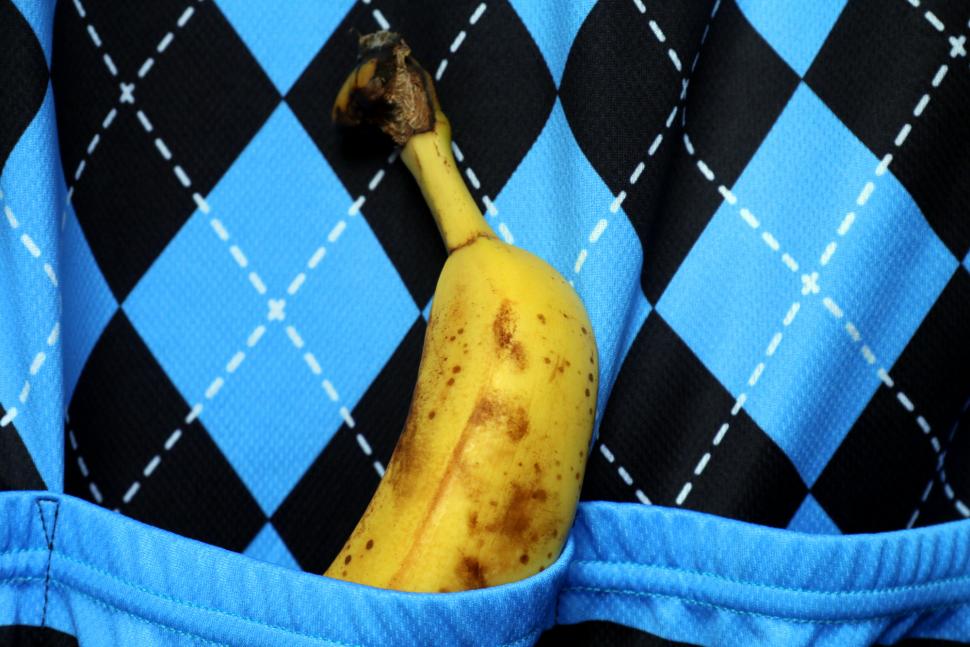 banana
bananaSeatpacks v pockets: what's the best way to carry stuff on a ride?
How do you carry the essentials you need for a bicycle ride? It’s commonly a choice between a saddle bag or filling your pockets, and it’s a choice that divides opinion.
To find out exactly how much the choice splits opinion, we conducted a Twitter poll recently. The results showed 70% of road.cc readers choosing a saddle bag.
Do you put all your spares and essentials in...
— road.cc (@roadcc) November 12, 2019
What spares do you need?
Before we get into the pros and cons of stuffing jersey pockets versus a bag hanging from your saddle, let's look at what spares are considered essential.
There are a few basic things it’s advisable to take on a ride in case of a flat tyre or mechanical failure. Here’s a typical bare essentials checklist:
- Spare tubes x2
- Pump
- Tyre levers
- Multi-tool with chain breaker
- Patches
- Chain links
Your list might vary of course. How much you carry very much depends on personal preference and can be influenced by how prepared you like to be for every conceivable scenario. Some riders are happy taking the bare essentials, some need to take a veritable bike shop worth of spares.
- Emergency essentials: the 10 things you should take with you on every ride
You might be happy with one tube, you might consider two the minimum. If you’re running tubeless you might want to pack some tubeless plugs and while it can be tempting not to take any spare tubes if you are on tubeless, it’s often wise to be on the safe side and pack a couple of spare tubes just in case.
The ride you’re embarking on can also be a factor. What you carry for a short lunchtime ride can be different from an epic ride in the mountains. So pack accordingly.
Extras you might want to carry and which will influence how you carry them include CO2 canister, cable ties, a tyre boot, chain links, cleat bolts and other nuts and bolts, a spare gear cable. As someone who has lost a saddle bolt at the start of a 300km ride, anything can happen on a ride. I always pack a couple of spare contact lenses too.
You’ve also got to consider food, spare clothing, phone and money and the space these bits take up when deciding where to carry the essentials. The space these things take up can leave little space for essentials, which is where saddlebags come in.
Pros and cons of saddlebags
A saddlebag is always attached to your bike so you’re ready to ride and can spend less time finding all your essentials when you prepare a ride.
Using a saddle bag keeps your pockets free for food and extra clothing, useful in the winter when the weather can be changeable.
Saddlebags can be a right old faff sometimes, tricky to cram all your essentials into and difficult to attach to the saddle in a satisfactory way that prevents it from moving about.
A saddlebag is also easy to swap between bikes as well if you ride more than one bike on a regular basis.
We’ll admit, saddlebags don’t always look that good on bikes especially humongous bags on sleek race bikes, but a compact neatly attached saddlebag does it for us. And you can’t see it when you’re riding anyway so what’s the problem?
There’s nothing worse than a badly attached saddlebag that is swing low and free from the back of a saddle, bravely making a bid for freedom.
Pros and cons of pockets
Most typical cycle jerseys and jackets stick to the traditional formula of three pockets. Some deviate from this with fewer or more pockets, but three is considered normal.
You can get a lot of stuff in those three pockets. The middle pocket can take spare tubes and a pump, the outside pockets small items like tools and remaining space for a phone, keys and snacks.
Using pockets saves fiddling and faffing with saddle bags and trying to get them attached securely to the saddle. Pockets also keep your bike looking clean and devoid of clutter, and it also keeps the weight off your bike, though it’s still in your pockets. For some people that difference can really matter.
Being organised can be tricky with pockets. You’ve got to have a pocket loading strategy!
Many cyclists will have a set way of loading the pockets and this differs hugely, coming down to a simple matter of what items you’re carrying to what items you might want easier access to. Generally, bigger stuff in the middle pocket because it's more stable, and easier access things like food and phone in the outer pockets. There are no rules.
Our Mat Brett uses this Lezyne Phone Caddy to store all his ride essentials and carries it in a middle pocket.
If that’s not enough stuff, Dave Atkinson takes it to the next level with a Sticky Pod crammed with stuff hopefully won’t need on a long ride.
Putting all the tools and spare in a bag or something akin to the Lezyne Caddy Sack means you can grab the bag and stuff it in the pocket of whatever jersey or jacket you’re heading out for a ride in.
There is a third way
Another old school method is a tool bottle. It can be an off-the-shelf product or with a removable lid, or if you’ve got an old water bottle lying around, simply but the top off, wrap your essentials in a plastic bag and you have a very cheap solution.
The downside is you lose a water bottle which could be an issue on longer rides, but you could use a bigger main water bottle, one like the massive 1 litre bottle featured elsewhere on the site recently.
And there's the bikepacking option
Not quite so popular with road cyclists yet, but a hit with gravel and adventure cyclists, there’s now a wide range of bikepacking bags that provide an alternative approach to carrying your essentials plus a lot more besides. A small top tube bag, frame pack or handlebar bag is a potential alternative if a saddlebag isn’t big enough or doesn’t do it for you.
Resident bikepacking enthusiasts Pat Joscelyne prefers to use a front bag in combination with a top tube bag to store everything he’s likely to need on a ride. He rarely ever uses pockets, occasionally for keys and sometimes extra clothing like gloves of buffs.
The advantage of using bikepacking bags is it frees you from the restraints of traditional cycle clothing with three pockets to wear more relaxed clothing that might be more comfortable for commuting, touring or bikepacking.
Our advice? Do whatever you're happiest with
Use whatever you’re comfortable with. There are no rules in cycling so experiment and find a solution that works for you. A straw poll in the road.cc office reveals... nobody has the same setup! Everyone has a slightly different approach based on their bikes and the type of riding they're doing.
Right, over to you lot now, let's hear how you carry your load in the comments section below.
David worked on the road.cc tech team from 2012-2020. Previously he was editor of Bikemagic.com and before that staff writer at RCUK. He's a seasoned cyclist of all disciplines, from road to mountain biking, touring to cyclo-cross, he only wishes he had time to ride them all. He's mildly competitive, though he'll never admit it, and is a frequent road racer but is too lazy to do really well. He currently resides in the Cotswolds, and you can now find him over on his own YouTube channel David Arthur - Just Ride Bikes.
Latest Comments
- Rendel Harris 2 sec ago
Been living in the area thirty years now and Brixton Cycles (and local riders wearing their famed Rastafarian colours jersey) has been an iconic...
- Rendel Harris 8 min 6 sec ago
There will be a delay with anything the human brain is asked to process, but the Varia identifies hazards up to 140m away and shows them on the...
- Hirsute 37 min 55 sec ago
That's nothing on the fentanyl sellers, just think how bad it is for them.
- chrisonabike 2 hours 4 min ago
Does the "super-loud yellow" also help alert (non-deaf / non-earbud-wearing) pedestrians? Or will it just mean dogs bark at me?
- Festus 2 hours 55 min ago
One thing that bothers me is the use of antidepressant med and driving, it never gets picked up by police. Most of these types of medicines state...
- chrisonabike 4 hours 55 min ago
Indeed - but again these are perhaps questions we should keep asking. Even if the immediate answer is "well we are where we are" or "how on earth...
- wtjs 6 hours 42 min ago
Then smash bad driving behaviour very hard...
- David9694 11 hours 20 min ago
Calls for Oxfordshire transport chief to resign blocked...
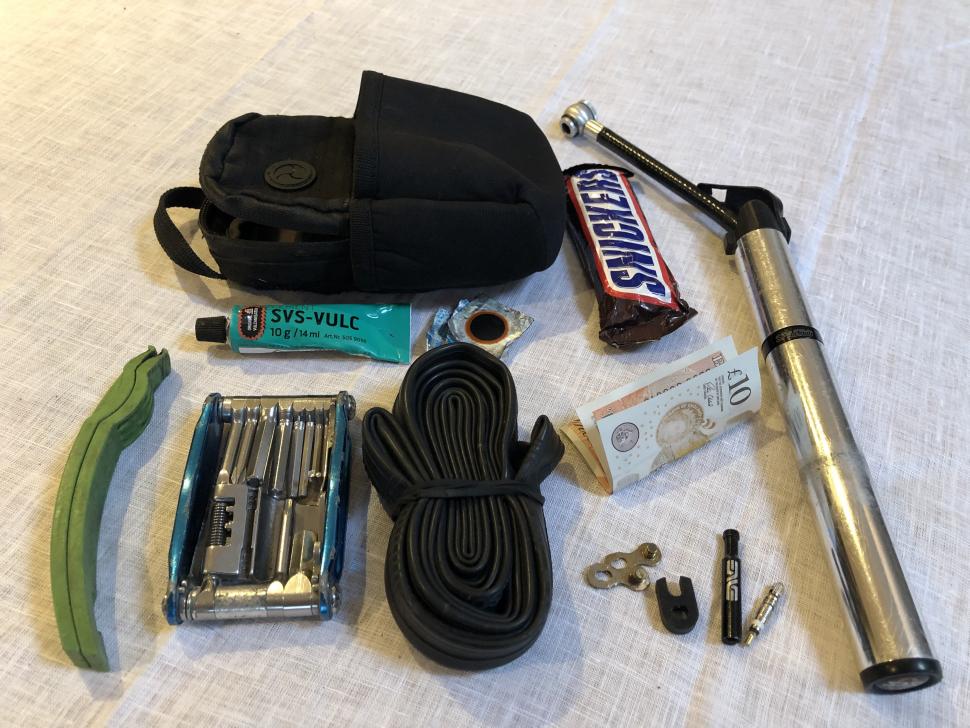
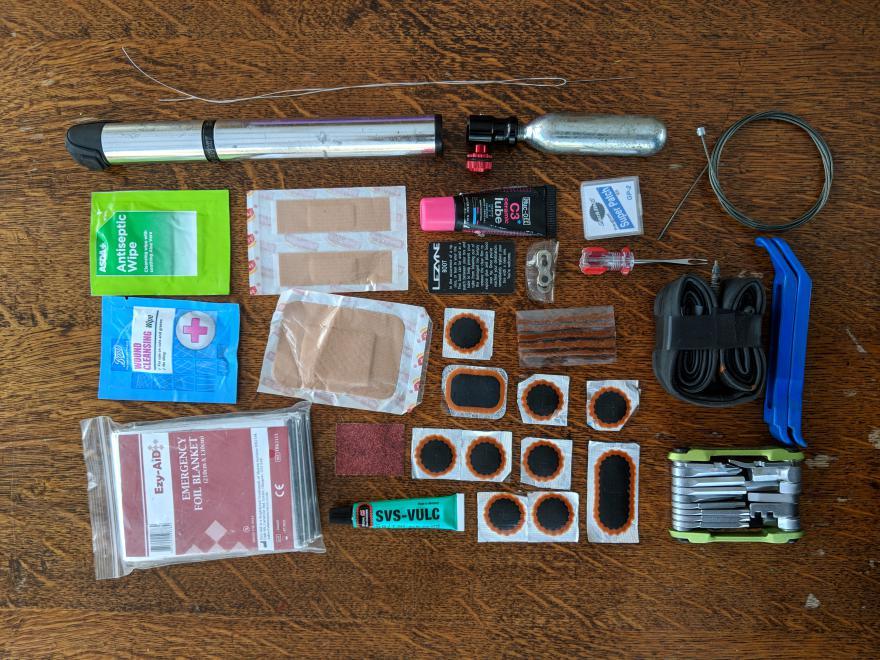

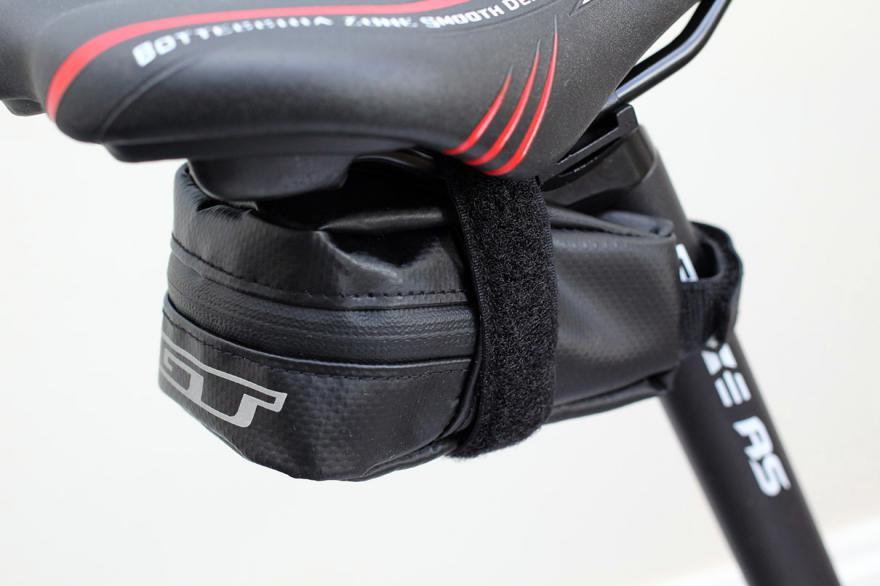

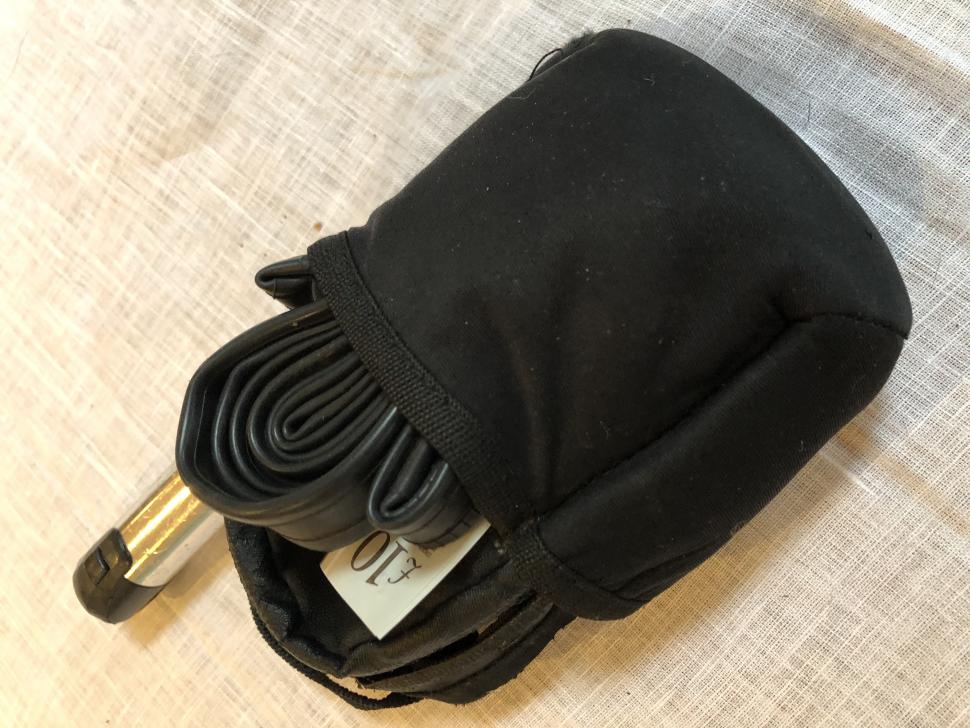
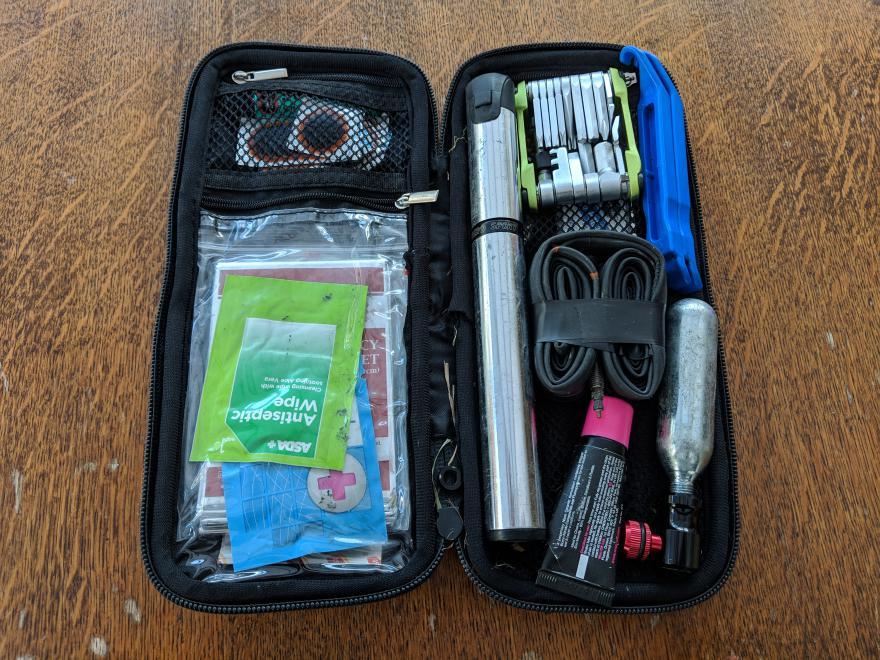


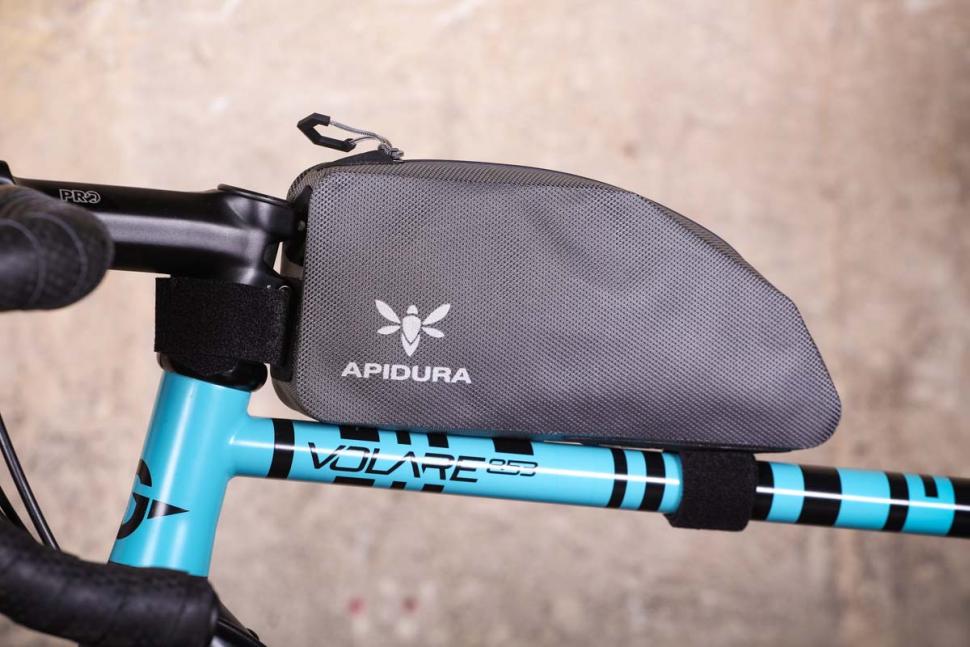
Add new comment
41 comments
Have paniers been banned?
I am a complete convert to top tube bags -- Profile makes an aero-ish one that has the benefit of being long enough to hold a minipump. I keep a minipump, spare tube, gels, multitool and patch kit in there. No seat bag to flop around or rub against my thighs. I can rearrange to keep card/money and phone in there if need be. And no ugly, muddy seat bag to mess up the lines of your bike...
Other food can go in jersey.
I switched from CO2/cartridge to minipump a few years ago after going through 2 cartridges on a ride. I'd rather spend an extra 5 minutes pumping away than be stranded.
Back pockets L-R: phone & cash & specs; gel & banana & buff; compact camera & house keys.
Underseat pack for stuff you hope not to need and would have to get off the bike to use: tools, spare tubes, tyre levers, patch kit, chain breaker & quick links, rear gear & derailleur cables, spare rear mech hanger, 25mm folding tyre lashed to underside of seat pack.
Stuff you don't need to get off the bike, or stop, to use: water bottle in one cage, gels & various bars in tool caddy thing*
*to paraphrase George Bernard Shaw "You can always tell an old cyclist by the inside of his storage bidon. The young ones carry tools and CO₂ cartridges; the old ones, grub."
Never use a pidly little seatpack anymore.
Rides that require only one bidon - extra cage has a tool bottle. Jersey pockets have essentials case, phone and probably a gel
Rides that require two bidons - Top tube bag with tools, gels, latex gloves, plasters etc. Essentials case, phone and food in jersey pockets
All day/ long audaxes etc - Carradice Super C saddlebag for most things. Just some snacks and phone in jersey pockets
Very small rectangular saddle bag for me, which holds one tube, one tyre lever, very small multi-tool, very small CO2 thingy and two cylinders (in case of F***wittery) and a pair of plasticky gloves. For a very long ride, maybe another tube, wrapped in cling film and then gaffer tape (with tear-tabs) jammed under the saddle. Bellroy phne case, with cards and thin-optics glasses, in centre pocket. Food, gilet, arm warmers in left and right, and raincape if needed in centre pocket too. For a long ride with heavy rain, a tiny bottle of wet lube too.
I'm surprised that no-one's mentioned the benefit of a front mounted basket.
It's the only safe way to carry a chicken: https://boingboing.net/2020/06/15/chicken-on-a-bicycle.html
Or a case of beer.
Or, as seen at the time trial stage of the 2013 Tour, a small dog
Of all the potential sentences the English language offers us ... "It's the only safe way to carry a chicken" is not one I expected to see on this site.
Chapeau, monsieur, chapeau.
That is a fine chicken safety helmet.
But in fact it means that foxes will come closer because of risk compensation or something.
saddle bag. One per bike, loaded. time-saver and memory aid. Don't forget to replace that tube you used, or those patches you used the last one of, or borrowed for another bike. Two tubes because patches success rate = 50% success rate. Right valve length for different wheels. Mini pliers. Pump attached to bike or in seat pack - or forgotten. Spare chain links.
Typical Sunday morning: scuzz around in bed for too long, then rush, rush, rush. Dress, then Food, drink, helmet, gloves and go
Jesus Christ the pictures on this upset me. Tools? Cable ties? Bits of chain and spare cables? Cleat bolts?? I go out to ride my bike, not fix it by the side of a B road. Sort yourself out ffs
But what do you do if you do have a mechanical by the side of a B road while you're out riding your bike?
Nick just rides round the block. You can't be too safe!
Simply prepare your bike properly before you go out and you won't need to open a pop up mechanic station on the B432
Indeed. All the bad things that might befall a bicycle are powerless in the face of proper preparation.
Sods law:
1: if you have it, you won't need it
2: if you don't have it, you will need it
Applies to tools, spares and extra clothing...
Personally, if I'm out round the block with the little one on the mtb's I'll chance it and not carry spares but if I'm going anything further than a short walk from home I carry what's needed to get me back - tube, some method of inflation, multitool & a chainlink as a minimum. Most of it is strapped to the bike so I carry it anyway.
Agree. The only way you can fully cover yourself is to carry an extra bike. Preferably with an extra cyclist for when you break down too.
I always have a multitool and patches at least, I've helped out lots of other riders who had neither. Cleat bolts are actually a good idea, come to think of it. Think extra cables might be overdoing it but if you're overlanding why not ...
How odd to see this topic come up. Only last week I bumped a post I did in 2014 on exactly this topic. I use an Aeroclam to store my spare tubes, levers, multi tool, inflator and emergency money. It stays on the bike all the time so I never forget it. The Aeroclam is very much more discrete than the majority of saddle bags. Jacket goes in my jersey pocket along with phone and food. Best of both worlds really, it doesn't have to be one or the other.
Big fan of the Aeroclam. A very underrated bit of kit.
Things I need to get at while riding go in jersey pockets. Phone. Food. Well, most food; cake goes in its own dedicated trailer.
Everything else goes on the bike. Tools in a tool bottle and anything else in luggage. I'm quite happy to use panniers but wouldn't be seen dead with a European posterior man satchel.
Saddle bag for everything apart from a small pump, which goes in the back pocket. Small bag with wallet/phone/keys in the middle jersey pocket, gels in another pocket.
Those people who stuff their Jersey pockets to the brim because they don't like to spoil the look of their bike - you do know you're spoiling the look of your jersey don't you?
And don't get me on people who go on group rides with next to nothing because they want others to bail them out 😜
Good lord, I'd rather take the car if I had to carry that much shit with me
I must be a minimalist as I take almost nothing with me. No need for a saddlebag or any other kind of bag either. Patches, mini-pump, tyre levers, mini-tool, rain jacket and food for anything up to 150km. Why would you take 2 spare tubes if you are taking patches too?
Rain jacket goes in the middle pocket of my jersey, mini-pump is taped to the seattube. Being right handed, the few tools I carry go in the left jersey pocket, while food goes in the right, making it easier to grab when riiding.
Less, is definitely more in my eyes.
having tried so many different things I am now in the sticky pod school of thought. Everything I need is in there and I don't need to faff with checking or changing for each ride - it either goes in the bag for commuting or in the jersey pocket for everything else. The slight extra weight is not going to change how long i take to ride somewhere as much as my overall fitness. Almost always riding solo so want to be as self sufficient as possible. its also faster to switch between bikes and not rattling or sway under the saddle and is easier to access...
I use talc to avoid that very issue.
Rule 29 applies: https://www.velominati.com/comment-page-1/
Bellend alert.
Pages